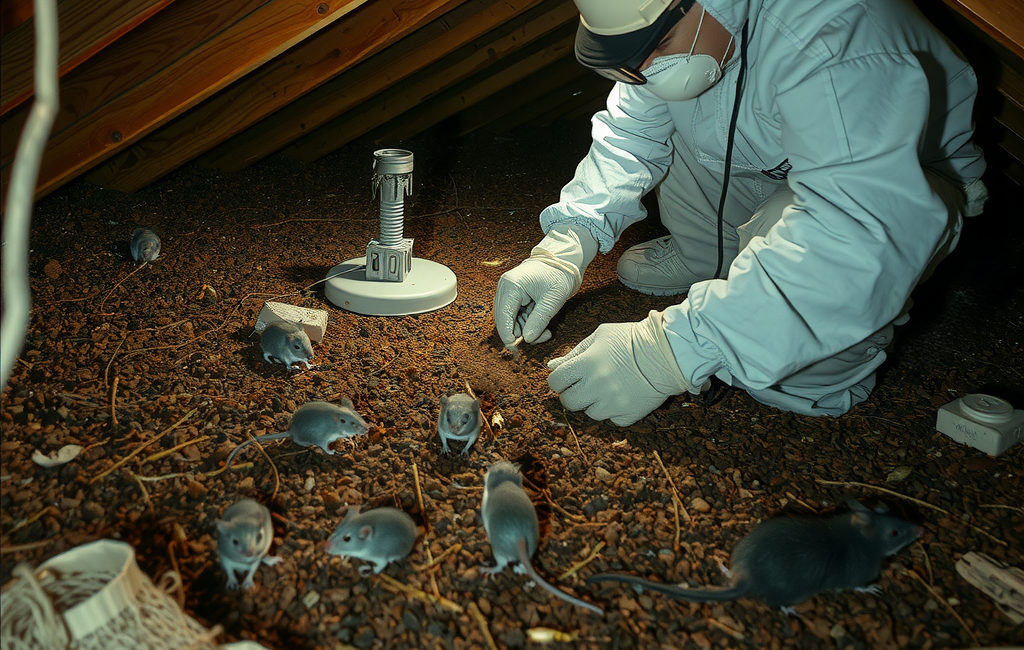As someone who has dealt with countless rodent infestations, I can tell you that finding rats in your attic is more than just a nuisance—it’s a serious issue that requires immediate attention. Not only do rats damage insulation, wiring, and stored items, but they also carry diseases that pose health risks to your family. If you’ve noticed scratching noises, droppings, or gnaw marks, it’s time to take action. Let’s walk through the best steps to get rid of rats in your attic and keep them from coming back.
Step 1: Identify the Signs of a Rat Infestation
Before you can tackle the problem, you need to confirm that rats are indeed the culprits. Here are some telltale signs:
- Scratching or scurrying sounds coming from the attic, especially at night.
- Droppings that look like small, dark pellets.
- Gnaw marks on wires, wood, or stored items.
- Grease marks along walls or baseboards where rats travel.
- A strong, musty odor indicating a large infestation or dead rats.
If you’ve spotted any of these signs, it’s time to move forward with eliminating the problem.
Step 2: Seal Entry Points
Rats can squeeze through tiny openings—some as small as a quarter—so sealing all entry points is crucial. Inspect your attic and the exterior of your home for:
- Gaps around pipes, vents, and utility lines
- Cracks in the foundation or siding
- Damaged roof tiles or shingles
- Openings around attic vents or chimneys
How to Fix It: Use steel wool, metal flashing, or heavy-duty caulk to seal these gaps. Avoid using materials like foam or rubber, as rats can chew through them.
Step 3: Remove Food and Water Sources
Rats won’t stick around if there’s nothing to eat. Take these steps to cut off their food supply:
- Store pet food and birdseed in airtight containers.
- Clean up crumbs and spills immediately.
- Ensure garbage cans have tight-fitting lids.
- Fix any leaking pipes or standing water sources in the attic or around the home.
Step 4: Set Traps Strategically
Traps are one of the most effective ways to remove rats, but placement is key.
Types of Traps to Use:
- Snap Traps: Quick and humane when used correctly.
- Electronic Traps: Deliver a high-voltage shock for a fast kill.
- Live Traps: Catch rats without harming them, allowing for relocation (though this isn’t always recommended).
Where to Place Them: Position traps along walls, near entry points, and in areas where you’ve seen droppings. Use peanut butter, nuts, or dried fruit as bait.
Step 5: Consider Bait Stations (With Caution)
Bait stations use rodenticides to poison rats, but they should be used carefully. Poisoned rats can die in hard-to-reach places, leading to foul odors and secondary poisoning risks for pets and wildlife. If you choose to use bait, it’s best to work with a professional to ensure safe placement.
Step 6: Clean and Sanitize the Attic
Once the rats are gone, it’s essential to clean up any remaining contamination. Rat droppings and urine can carry harmful bacteria, so wear gloves and a mask while cleaning.
- Remove and dispose of contaminated insulation or items.
- Use a disinfectant spray to sanitize surfaces.
- Vacuum with a HEPA filter to remove any lingering debris.
Step 7: Prevent Future Infestations
To make sure rats don’t return, take preventive measures:
- Trim tree branches that touch or overhang your roof.
- Keep your yard clutter-free and store firewood away from your house.
- Conduct regular inspections to check for new entry points.
When to Call a Professional
If your rat problem persists or you’re dealing with a large infestation, it’s time to bring in the experts. At Insight Pest Management, we specialize in rodent control and exclusion techniques that ensure your attic stays rat-free for good. Contact us today for a thorough inspection and customized pest control plan!


